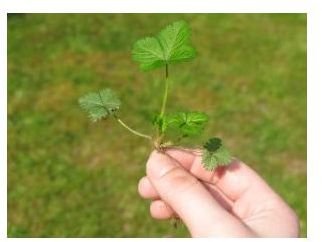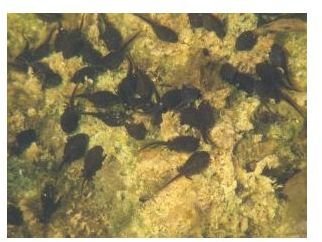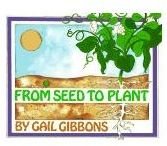Teaching Preschoolers About Growing: Life Cycle Activities for Kids
Lessons and Activities About Growing
When teaching preschoolers about growing, it helps to show them the life cycles of various creatures throughout the animal kingdom. Animals commonly used are chickens (birds), frogs (amphibians), snakes (reptiles), butterflies (insects), fish, and humans (mammals). Teaching the life cycle of a plant can also help. Some general activities can be tailored to fit all of these topics.
(NOTE: Please check the resource section below to access recommended websites and books.)
- Books - Read books about life cycles at circle time. Ones with photographs in lieu of illustrations are the best, as they accurately portray the growing process. Scholastic Books publishes a number of simple life cycle books with real photographs. The Rookie Read-About Science series has excellent photographs and information. Gail Gibbons is a great nonfiction author for kids who uses well-done illustrations. The text of these two series may need to be simplified when being shared, but they contain a wealth of information.
- Sequencing - Provide sequencing cards of the various life cycles, using real photographs when possible. Demonstrate to the children how to lay them out in order. Have a master poster as a control. Sometimes you can find booklets or coloring pages to match these cards. Have the children compare and contrast the growth of different types of plants and animals based on these pictures. Great online resources for these are Enchanted Learning and ABC Teach. Companies such as Deep Discount School Supply and Learning Resources carry small manipulative models and stamps of different life cycles. Companies such as Carson-Dellosa and Trend also carry pre-made bulletin board sets that demonstrate the sequencing. Often these kits include follow-up activities for the classroom or learning centers.
- Real life examples - Use real life examples in the classroom whenever possible. To truly understand the growing process, preschool children need to see it in action. Grow lima bean plants in a sandwich baggie. Hatch chicken eggs in an incubator. Watch caterpillars spin their chrysalises and emerge as beautiful butterflies. Catch tadpoles in a pond and watch them become frogs. Have babies known to families and faculty come in for regular visits. Insect Lore is a company that sells kits.
- Journaling - When growing real living things in the classroom, children should keep a small notebook of their observations. They can draw pictures of what they see and update at least once a week. Those who can write can also copy words that pertain to their observations.
Spring is the best time to talk about how things grow, as it is the season of rebirth and growth. Nature is more easily observed at this point. As you grow plants and animals, you can safely release them into the wild when observations are complete.
Tips for Teaching How Plants Grow

Include a variety of methods for growing plants in this unit.
- Use cuttings from a houseplant or coleus plant to show how leaves can root in water.
- Demonstrate how a seed grows by using lima beans in a sandwich baggie hanging in a window. Have children wet a paper towel and place it in the bottom of a Ziploc bag. Place at least one lima bean between the paper towel and the baggie. Hang the baggie in a sunny window with the seed facing the sun. Check it daily for signs of growth.
- Follow the lima bean lesson with planting other types of seeds directly in dirt. Use cups inside the classroom or plant in an outside garden.
- In the fall, plant bulbs in an outdoor garden. In the spring, grow an Amaryllis bulb inside.
- Collect acorns in the fall and try to plant them indoors.
- Experiment with growing seeds and plants in different areas of the classroom. Hide some in a closet. Have identical plants that get different types of attention, such as different watering schedules (once a day versus once a week versus once a month), one that gets talked to and one that is ignored, etc.
Use observations of these different types of growing to compare and contrast different types of plants. Apply those observations to different kinds of animals.
Tips for Teaching How Animals Grow

It is best to use real animals to demonstrate the growing process whenever possible. With certain animals, though, this can be difficult. Sometimes you can find easy field trips within the community such as a local farm, to observe the growth of animals over repeated trips. Sometimes parents have resources available to donate or loan to the classroom. It is also more fun to actually catch the caterpillars and tadpoles then to purchase them from a company.
Just remember that if you commit to caring for animals in the classroom as a part of the preschool growing lesson, you must be prepared to care for that animal or have a plan in mind.
Tips for Teaching How People Grow

Take advantage of the daily growth that is occurring in the classroom by using the children as a teaching tool. These activities can be done at any point during the school year, because they are always inside.
- Regularly measure the children so that they can monitor their own growth throughout the course of the year.
- Discuss nutrition and healthy lifestyle choices, to help children make smart choices to help them grow.
- Give parents a guideline for a family project. Have them use photographs of the children at given ages, such as newborn, six months, one year, etc. Include with each picture a sentence or two about what the child was doing at that age. Children can compare and contrast their pictures and stories to see how they have grown thus far.
- Have a baby visit the classroom on a regular basis so that children can see how he is growing and developing.
Resources & References
Resources
ABC Teach https://www.abcteach.com
Carson Dellosa products https://www.carsondellosa.com
Deep Discount School Supply https://www.discountschoolsupply.com
Enchanted Learning https://www.enchantedlearning.com
Insect Lore https://www.insectlore.com/
Learning Resources https://www.learningresources.com
Rookie Read-About Science Series, Children’s Press, 1996-2005.
Scholastic Books https://teacher.scholastic.com
Trend Enterprises https://www.trendenterprises.com
Image Credits
Infant image by Justyna Furmanczyk on SXC, under license
Plant image by Sanja Gjenero on SXC, under license
Tadpole image by Iwan Beijes on SXC, under license
